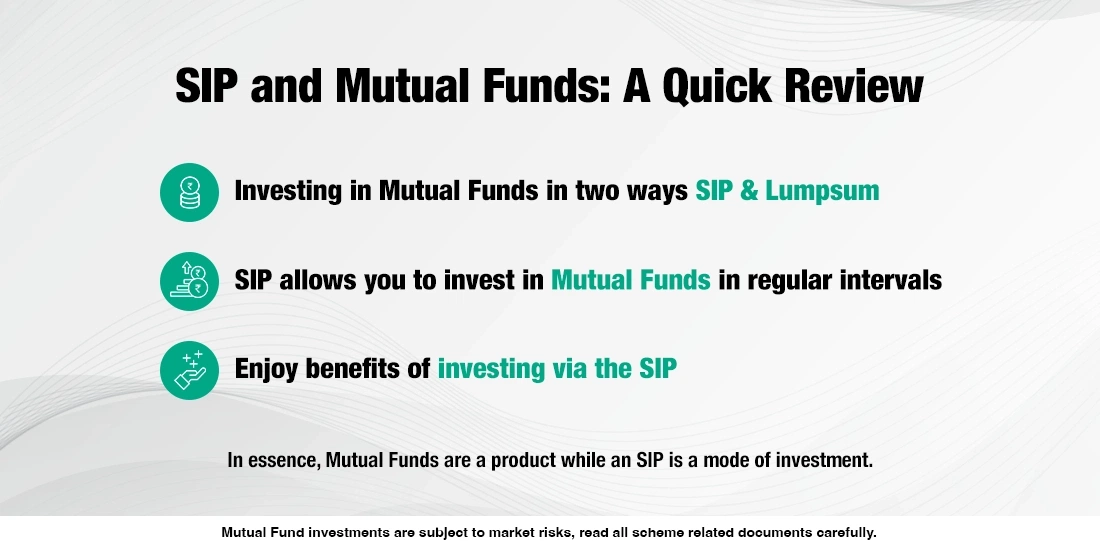What Is the Difference Between SIP and Mutual Fund?
1min 15 seconds read

Breakdown: Mutual Fund and SIPs.
A Mutual Fund is a financial product, while a SIP is a way to invest in Mutual Funds. When you choose the SIP method, you're still investing in a Mutual Fund scheme.
Let's explore how investing in Mutual Funds and SIPs can help you secure your financial future
What is a Mutual Fund?
In a Mutual Fund, multiple investors pool their money to invest in assets like stocks, bonds, and other securities. Experienced fund managers look after that money. However, this professional management and expertise come with associated costs. These fees are typically a small percentage of the total assets managed by the fund and are deducted from the fund's returns. As an investor, you own units representing a portion of the fund's total assets. The net asset value of these units changes based on the market performance of the underlying securities.
When it comes to investing in a Mutual Fund, you have two options:
1. Lump Sum Method: Whenever you have surplus cash, you can deploy that in an open-ended mutual fund scheme. There is no restriction on the maximum amount you can invest. The minimum amount mostly starts at Rs 500 for lump sum investments.
2. SIPs (Systematic Investment Plans): Through SIP, you have the option to contribute a regular amount, starting from as low as Rs 101.
When you invest in mutual funds, you will be allocated units equivalent to the Mutual Fund's Net Asset Value (NAV) on those specific dates. The NAV essentially signifies the market value of one unit of the Mutual Fund on a particular date.
Why Invest Through SIPs?
1. Rupee Cost Averaging
You buy a fixed amount of Mutual Fund units at regular intervals, purchasing more when the market is down and fewer when it's up, averaging out your investment costs. That is rupee cost averaging.
2. Start Small
SIPs are accessible to anyone, regardless of the amount you can invest. You can start with as little as Rs 500 a month and still witness impressive returns over time. The minimum amount for an investment in mutual funds varies from one scheme to another.
3. Flexibility and Control
SIPs offer the flexibility to choose the investment amount and frequency that suits your financial situation. You can increase, decrease, pause or stop contributions.
4. Power of Compounding
If you stay invested for the long-term, your money multiplies giving you the benefit of power of compounding, subject to market risk.
5. Disciplined Investment Habit
SIPs help you build a disciplined investment approach. You can designate multiple SIPs for different financial goals and achieve them.
Ways to Invest in Mutual Funds
Direct investment: You invest directly via the mutual fund company. This means you take charge of the entire investment process, from selecting funds to making the investment. It often comes with lower fees since there's no middleman involved.
Distributor investment: If you choose to invest through a distributor, you're working with an intermediary like a financial advisor or broker. They guide you in choosing suitable funds and manage the technical stuff. However, this option might have added costs due to the distributor's services.
Disclaimer
Mutual Fund investments are subject to market risks, read all scheme related documents carefully.